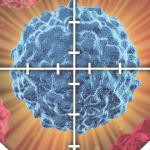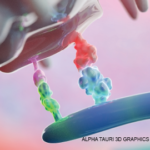The patient regularly followed up in the rheumatology clinic and made significant progress in her strength. None her symptoms recurred during the prednisone taper, even at doses less than 10 mg. Her CK, troponin, AST and ALT remained normal on serial surveillance. She was restarted on statin therapy without adverse events. Six months later, she was walking without any assistive devices and had regained full functionality of her routine lifestyle.
Discussion & Literature Review
This case is unique in that nivolumab was being used as a novel agent for ovarian cancer. Further, its use led to a unique constellation of inflammatory responses that overlap with autoimmune conditions. The patient developed myositis, heart block, ptosis, dysphagia, dysphonia, rash and respiratory stridor, which are not typically reported and even less likely to manifest concomitantly.
The acuity of symptom onset and temporal association of events, worsening of symptoms following additional doses of nivolumab, muscle and skin biopsy evidence of inflammation, and resolution of symptoms with steroid use raised concern that the patient was having an immune-mediated adverse event from nivolumab.
Myositis: Myalgias and arthralgias are associated with 2–12% of cases of ICI use, but myositis is rarely reported. The initial rheumatologic consultation was to rule out polymyositis, dermatomyositis or statin myopathy in the setting of underlying malignancy, muscle weakness and rash. The association between certain malignancies (e.g., ovarian, breast, lung, gastric, lymphoma) and myositis is well known to rheumatologists. Dermatomyositis (DM) or paraneoplastic necrotizing myopathy (PNM) has been reported with malignancies. Sometimes these are reported as a presenting feature of the malignancy. However, DM or PNM did not explain all of the patient’s symptoms, including the cardiac and neurologic manifestations. Myositis antibodies were negative. The rash was pretibial and atypical for heliotrope or shawl sign, Gottron’s papules, poikiloderma or photosensitivity. The symptoms occurred at a point in time when the patient’s cancer was in remission and did not occur during her initial diagnosis in 2014 or recurrence in 2015.7,8
The relationship between cancer and paraneoplastic myositis is also thought to be mediated through the immune system. Auto-antigen triggers are thought to overlap between cancer cells and myositis cells, in which the immune-mediated destruction of muscle may be a paraneoplastic manifestation of the immune system’s response to the cancer. The use of PD1 inhibitors may further complicate the immune system’s balance through their effect on signaling pathways.9,10
Another consideration for a possible cause of myositis in this patient was statin use, which can cause an immune-mediated necrotizing myopathy. However, the rash and presence of other symptoms were not typical of statin-induced myopathy, and neither was the muscle biopsy report. She was also able to tolerate restarting statin therapy.11,12



